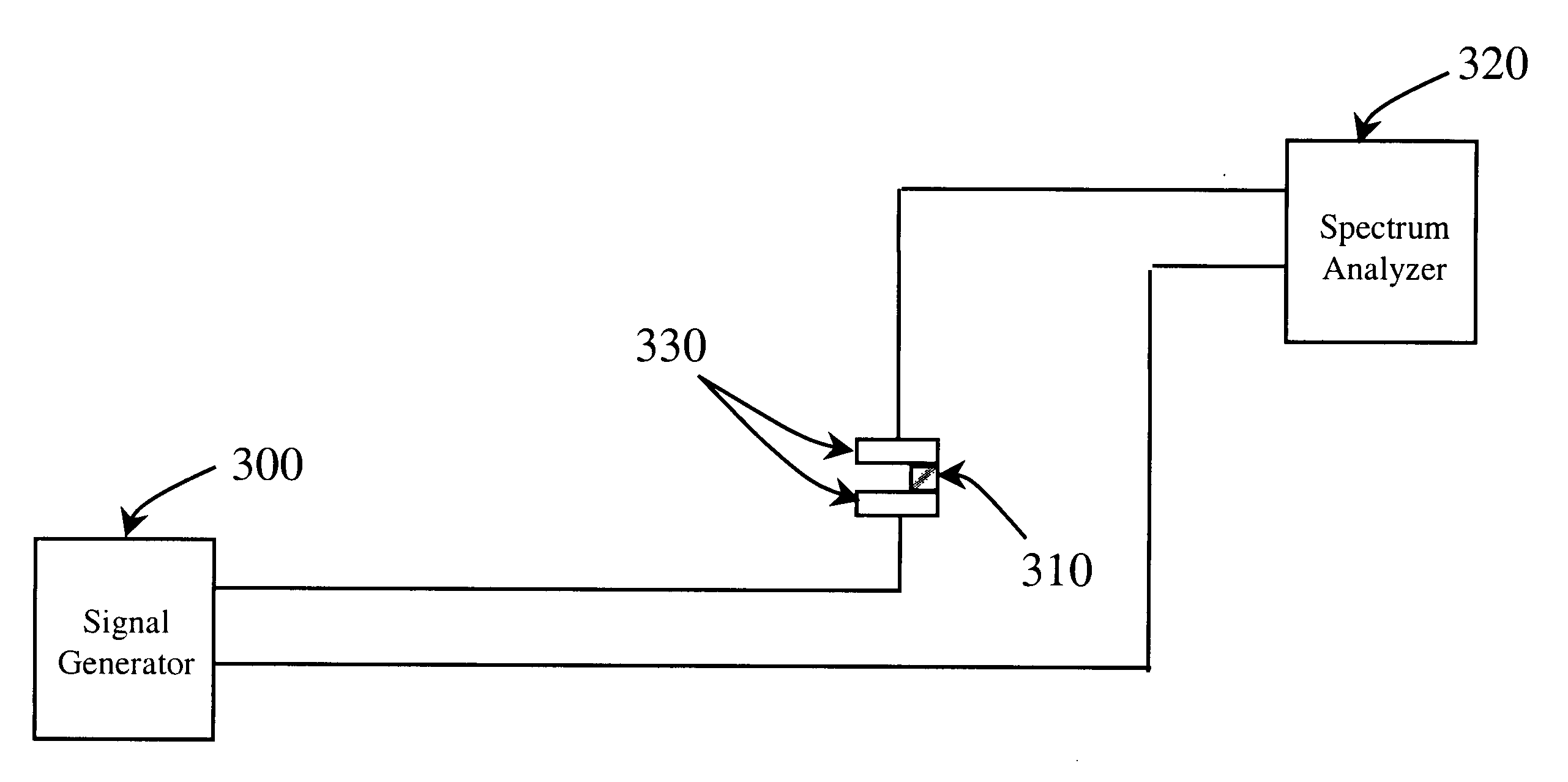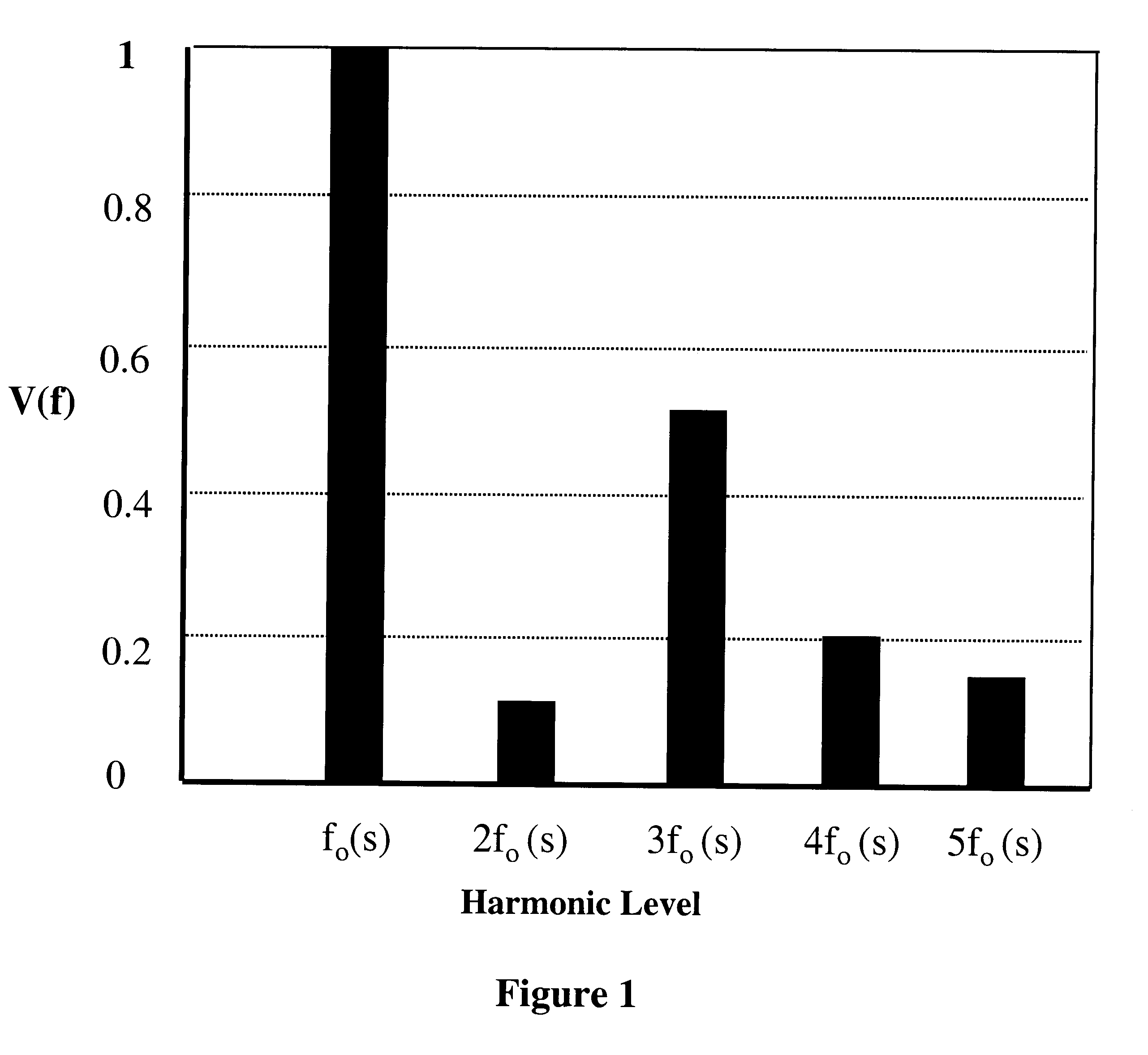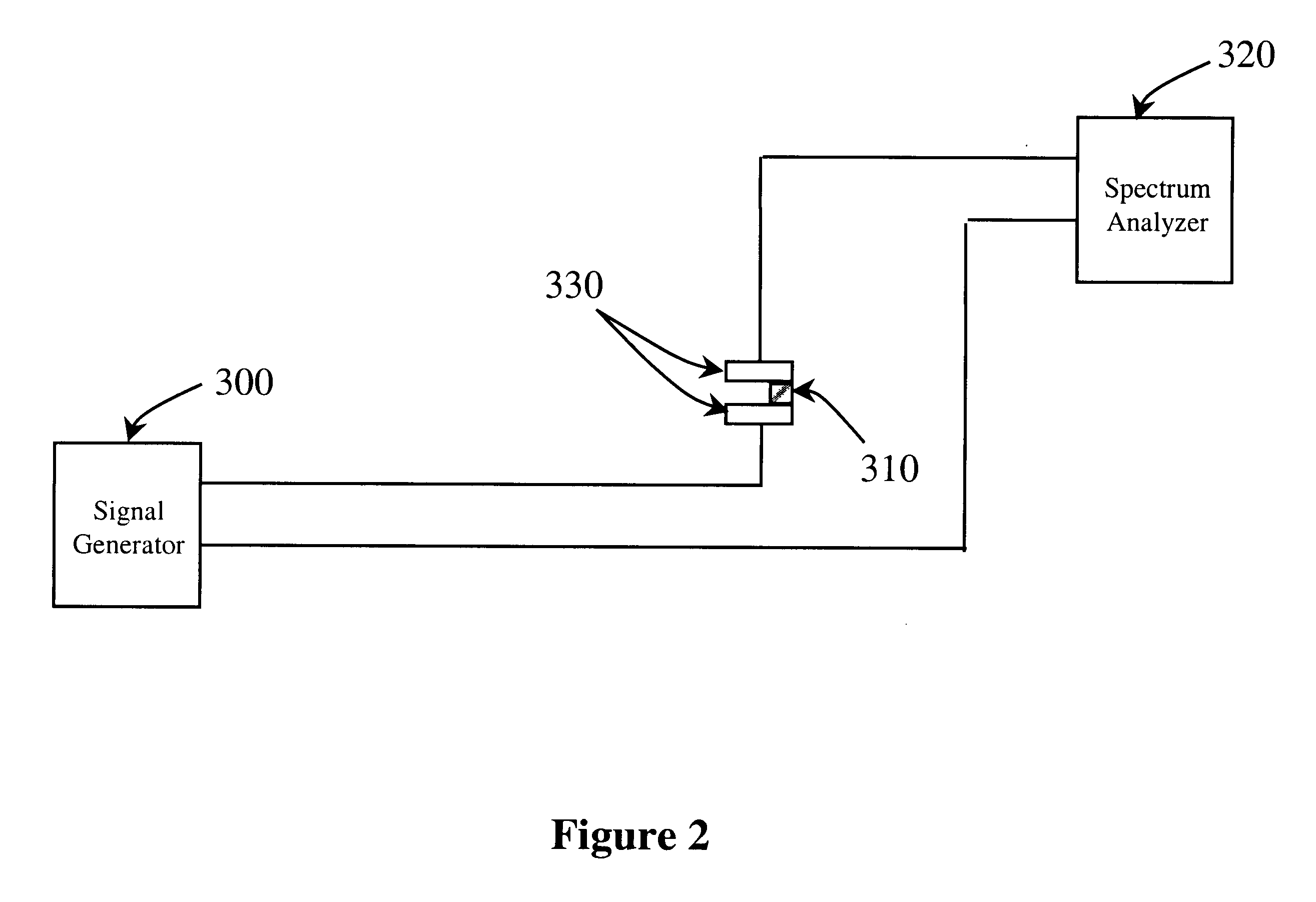Apparatus and method to detect corrosion in metal junctions
a technology of metal junctions and apparatus, applied in the direction of liquid/fluent solid measurement, material electrochemical variables, instruments, etc., can solve the problems of corrosion, structural failure of corroded members, corrosion can distort or disrupt electrical signals, etc., and achieve the effect of convenient detection
- Summary
- Abstract
- Description
- Claims
- Application Information
AI Technical Summary
Benefits of technology
Problems solved by technology
Method used
Image
Examples
Embodiment Construction
1. A minimal embodiment is a detector sensitive to the harmonics of the frequency of a signal passing through a junction, but not to the fundamental frequency of the signal. Typically this could be done with a signal generator and a radio receiver with a high-pass filter in series with the corroded junction. An amplifier can also be added to increase the sensitivity of this configuration.
2. Two or more input signals are injected into the junction under test. Corrosion in the signal path will produce intermodulation products of these input signals. Test for output at the frequency of the intermodulation products of the input signals.
3. A single current probe for both input and output of the test signal.
4. Testing with radiated signal input and / or output.
5. Testing with conducted input and / or output.
6. Time domain reflectometry combined with the test technique presented above helps identify the location of the corroded junction.
7. A single frequency input applied to the system instead...
PUM
| Property | Measurement | Unit |
|---|---|---|
| threshold voltage | aaaaa | aaaaa |
| resistance | aaaaa | aaaaa |
| frequency | aaaaa | aaaaa |
Abstract
Description
Claims
Application Information
 Login to View More
Login to View More - R&D
- Intellectual Property
- Life Sciences
- Materials
- Tech Scout
- Unparalleled Data Quality
- Higher Quality Content
- 60% Fewer Hallucinations
Browse by: Latest US Patents, China's latest patents, Technical Efficacy Thesaurus, Application Domain, Technology Topic, Popular Technical Reports.
© 2025 PatSnap. All rights reserved.Legal|Privacy policy|Modern Slavery Act Transparency Statement|Sitemap|About US| Contact US: help@patsnap.com



